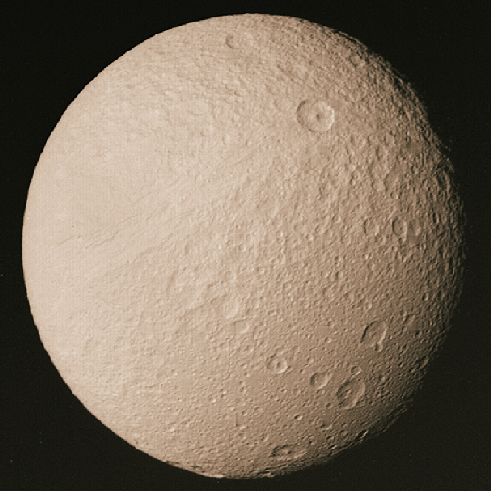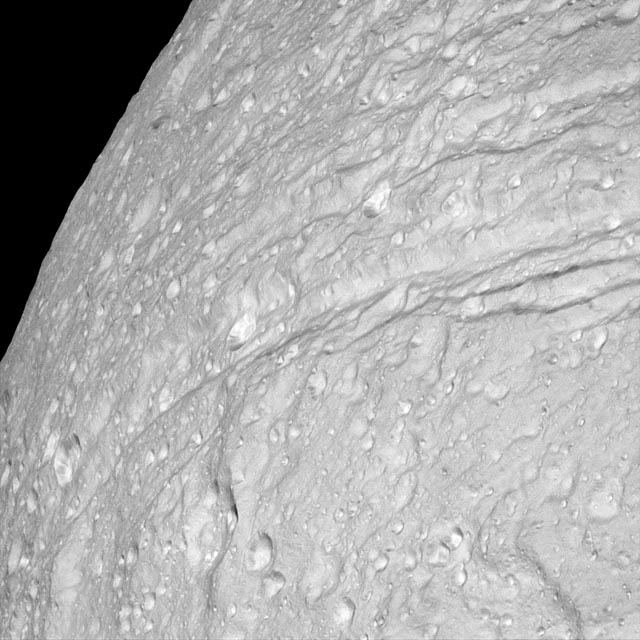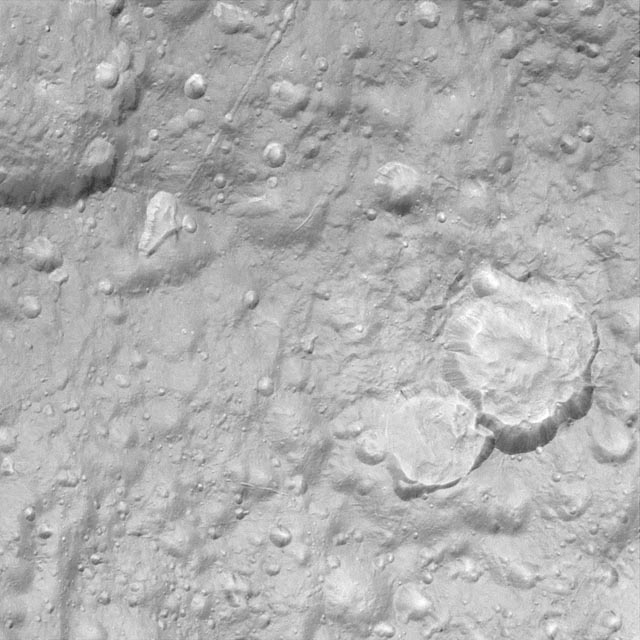

Tethys:
Tethys was discovered by Giovanni Cassini in 1684. It is an icy body similar in nature to Dione and Rhea. The density of Tethys is 1.21 gm/cm3, indicating that it is composed almost entirely of water-ice.
Tethys's icy surface is heavily cratered and contains cracks caused by faults in the ice. There is one enormous trench on Tethys about 65 kilometers wide and extending from above the center to the extreme left. It covers three-fourths of Tethys' circumference. The fissure is about the size scientists would predict if Tethys were once fluid and its crust hardened before the interior. The canyon has been named Ithaca Chasma.
A vast expanse of relative young plains also exists on Tethys. Tethys' surface temperature is -187C (-305F).

This view of the surface of Saturn's moon Tethys, taken during Cassini's close approach to the moon on Sept. 24, 2005, reveals an icy land of steep cliffs. The view is of the southernmost extent of Ithaca Chasma, in a region not seen by NASA's Voyager spacecraft. The ridges around Ithaca Chasma have been thoroughly hammered by impacts. This appearance suggests that Ithaca Chasma as a whole is very old. There is brighter material in the floors of many craters on Tethys. That's the opposite situation from Saturn's oddly tumbling moon Hyperion, where dark material is concentrated in the bottoms of many craters.

This view is among the closest Cassini images of Tethys' icy surface taken during the Sept. 24, 2005 flyby. This image is a clear-filter view and is the highest resolution image acquired by Cassini during the encounter. The two large craters at the right show evidence that landslides have modified their outlines and covered their floors with large quantities of debris. Linear depressions cutting across the terrain probably mark the surface expressions of faults or fractures.